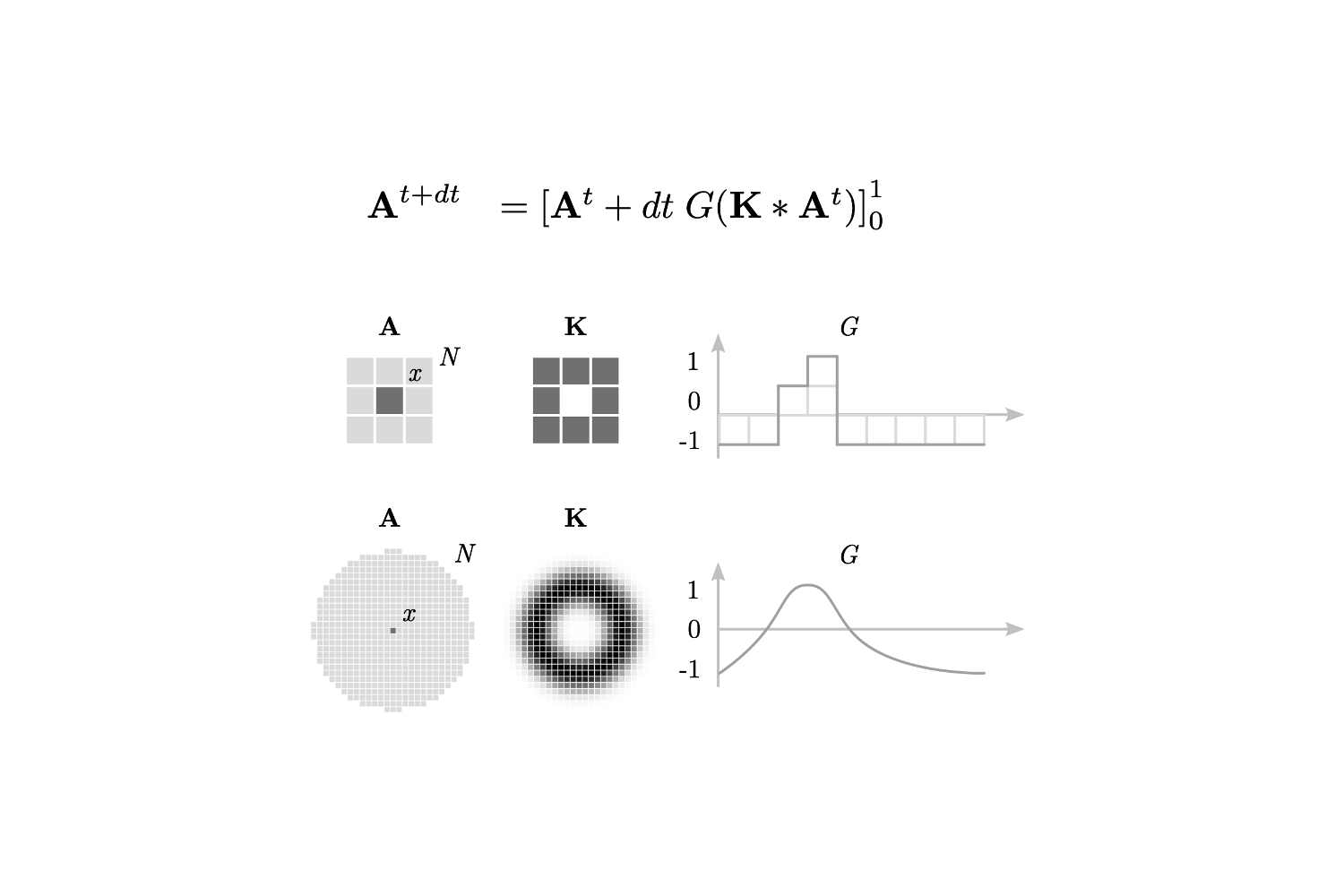Agent-based models of cancer


An ongoing theme in the lab is using the Hybrid Automata Library (HAL) open-source framework (Java) to develop, analyze, and visualize agent-based mathematical models. We’ve recently implemented a continuous space-time cellular automata model known as “Lenia” in HAL.
Lenia (from the Latin lenis meaning “smooth”) is an N-dimensional cellular automaton that allows for continuous space and time. Cellular automata have been used to study the “rules” that can recapitulate the collective behavior of interacting biological ``agents’’ (e.g. cells or organisms). The development of Lenia was spurred by the search for rule-sets that lead to features that are important in artificial life: self-organization (morphogenesis) self-regulation (homeostasis), self-direction (motility), self-replication (reproduction), growth (development), response to simuli or environmental factors, evolvability, and adaptation. As many of these same features are important in cancer (e.g. replication, growth, motility, evolvability, and adaptation), we extend the Lenia framework as a cancer model.
My latest weekend project: implementing @BertChakovsky's Lenia project in @HybridAutomata.
— Jeffrey West (@mathoncbro) August 7, 2022
It's an elegant and mathematically beautiful method to extend discrete cellular automata (e.g. Game of Life) to allow continuous states.
🧵 incoming thread of cool automata gifs: pic.twitter.com/wI2FuJ8e0T




Comments